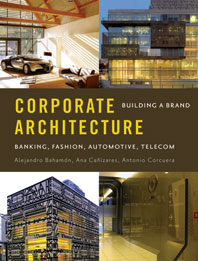Director Robert Lepage orchestrates an architectural feat for a new Metropolitan Opera production of Wagner’s Ring cycle.
| Photo © Ken Howard |
During the fall performances of Das Rheingold (repeating in March), acrobats stand in for singers to traverse the planks that are raised up above the stage and rotated by computer into fanlike steps. |
Stage design is typically an ephemeral art. Environments appear substantial, but they are often masterful imitations of the real thing made with lightweight, durable materials capable of continual setups and breakdowns. Enter Canadian director Robert Lepage, whose new production of Richard Wagner’s Ring cycle for New York City’s Metropolitan Opera literally revolves around a singular architectural conceit.
Conceived by Lepage in collaboration with Montreal-based set designer Carl Fillion, this structure comprises 24 triangular 2-foot-wide, 30-foot-long aluminum planks mounted to an axis that spans two 26-foot-high offstage steel towers. It serves the entire Ring cycle — a 16-hour series of four operas based on Norse myth. But, notes Fillion, the operas — Das Rheingold, Die Walküre, Siegfried, and Götterdämmerung — will each be different, never static or boring.
This is largely because the structure is “painted” with ever-changing streams of interactive video. It is also due to the incredible versatility of the device itself, which is controlled both manually and by computer. Hydraulic pistons in the towers facilitate the raising and lowering of the axis, which rotates within the planks. Fitted with a redundant brake system (for safety and positioning), the individual planks can either turn automatically with the axis or be configured independently. “You can’t imagine the number of positions we can achieve with 24 planks,” says Fillion. This allows countless iterations, he explains — without the projections.
It is the projections, however, that animate the pale gray planks — a neutral palette surfaced with fiberglass resin–topped plywood and coated in a pale gray epoxy — further transforming them into other worlds. Motion- and sound-detecting equipment, along with a special encoder to correct perspective distortion, distributes the imaging in a natural, lifelike manner across the stage.
Remarkably, Lepage is close to realizing the German composer’s original concept. According to the Met’s general manager, Peter Gelb, when Wagner envisioned his Gesamtkunstwerk, he wanted to create a new theatrical technology that would realistically represent its mythological wonders, from swimming Rhine maidens to flying war goddesses. This was a tall order when the work premiered at Bayreuth in 1876.
To Fillion, “Wagner’s work is like a film, an amazing thing for his time.” Even now, adds the set designer, some of his ideas are difficult to stage. Yet, says Gelb, “Wagner would be impressed with the cutting-edge theatrical technology that Lepage has harnessed to serve the story today.”




















Post a comment to this article
Report Abusive Comment